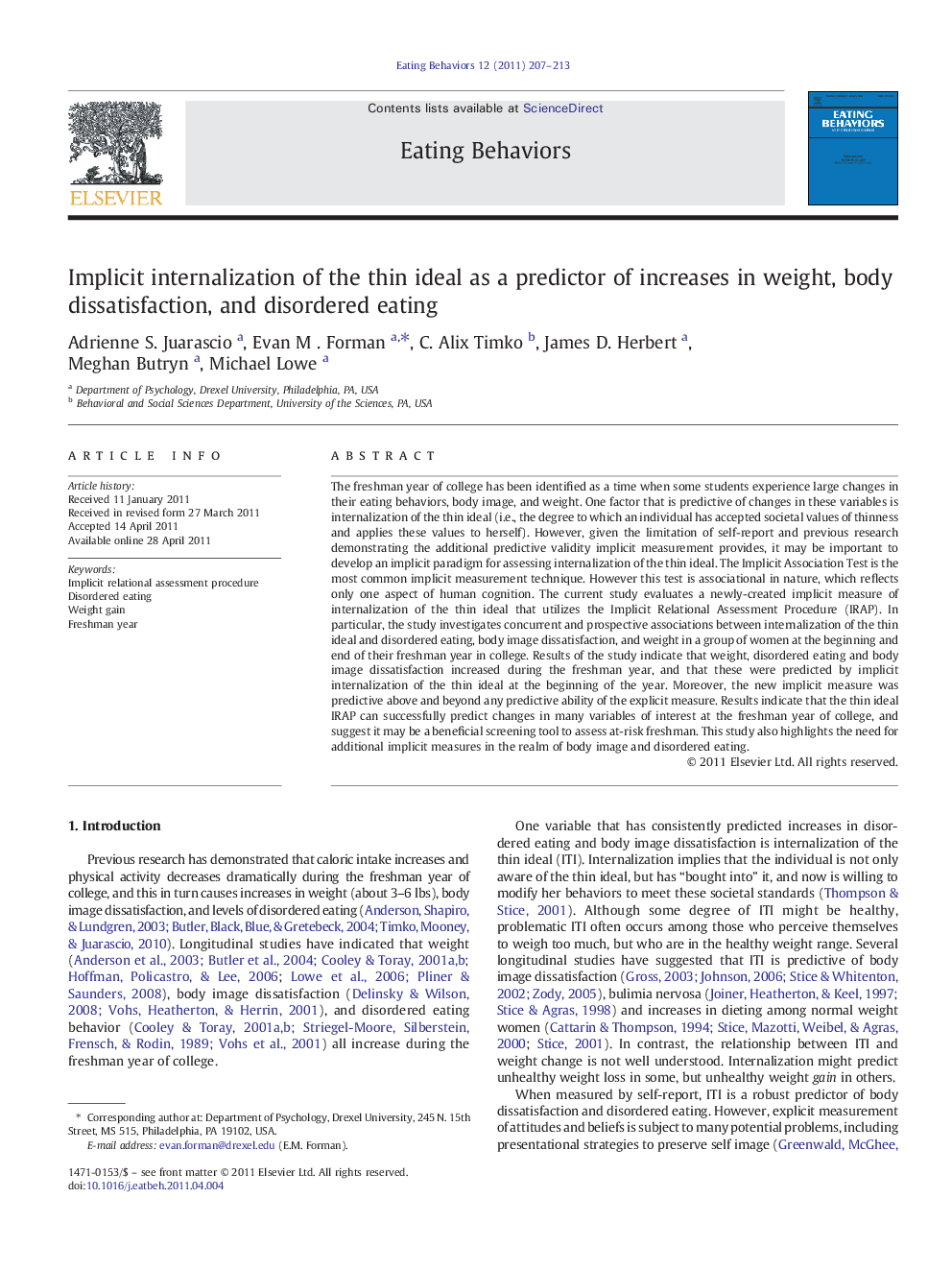The freshman year of college has been identified as a time when some students experience large changes in their eating behaviors, body image, and weight. One factor that is predictive of changes in these variables is internalization of the thin ideal (i.e., the degree to which an individual has accepted societal values of thinness and applies these values to herself). However, given the limitation of self-report and previous research demonstrating the additional predictive validity implicit measurement provides, it may be important to develop an implicit paradigm for assessing internalization of the thin ideal. The Implicit Association Test is the most common implicit measurement technique. However this test is associational in nature, which reflects only one aspect of human cognition. The current study evaluates a newly-created implicit measure of internalization of the thin ideal that utilizes the Implicit Relational Assessment Procedure (IRAP). In particular, the study investigates concurrent and prospective associations between internalization of the thin ideal and disordered eating, body image dissatisfaction, and weight in a group of women at the beginning and end of their freshman year in college. Results of the study indicate that weight, disordered eating and body image dissatisfaction increased during the freshman year, and that these were predicted by implicit internalization of the thin ideal at the beginning of the year. Moreover, the new implicit measure was predictive above and beyond any predictive ability of the explicit measure. Results indicate that the thin ideal IRAP can successfully predict changes in many variables of interest at the freshman year of college, and suggest it may be a beneficial screening tool to assess at-risk freshman. This study also highlights the need for additional implicit measures in the realm of body image and disordered eating.
Previous research has demonstrated that caloric intake increases and physical activity decreases dramatically during the freshman year of college, and this in turn causes increases in weight (about 3–6 lbs), body image dissatisfaction, and levels of disordered eating (Anderson et al., 2003, Butler et al., 2004 and Timko et al., 2010b). Longitudinal studies have indicated that weight (Anderson et al., 2003, Butler et al., 2004, Cooley and Toray, 2001a, Cooley and Toray, 2001b and Hoffman et al., 2006; Lowe et al., 2006 and Pliner and Saunders, 2008), body image dissatisfaction (Delinsky and Wilson, 2008 and Vohs et al., 2001), and disordered eating behavior (Cooley and Toray, 2001a, Cooley and Toray, 2001b, Striegel-Moore et al., 1989 and Vohs et al., 2001) all increase during the freshman year of college.


